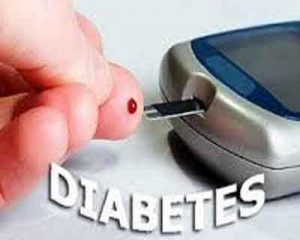- Home
- Editorial
- News
- Practice Guidelines
- Anesthesiology Guidelines
- Cancer Guidelines
- Cardiac Sciences Guidelines
- Critical Care Guidelines
- Dentistry Guidelines
- Dermatology Guidelines
- Diabetes and Endo Guidelines
- Diagnostics Guidelines
- ENT Guidelines
- Featured Practice Guidelines
- Gastroenterology Guidelines
- Geriatrics Guidelines
- Medicine Guidelines
- Nephrology Guidelines
- Neurosciences Guidelines
- Obs and Gynae Guidelines
- Ophthalmology Guidelines
- Orthopaedics Guidelines
- Paediatrics Guidelines
- Psychiatry Guidelines
- Pulmonology Guidelines
- Radiology Guidelines
- Surgery Guidelines
- Urology Guidelines
Novel protein linked to diabetes identified

New York : Researchers have identified a protein, the lack of which can contribute to development of Type-2 diabetes.
Absence of the PTRF (Cavin-1) protein in model organisms and humans results in a nearly complete loss of fat cells, a condition called lipodystrophy.
This lack of fat cells causes fat to be mis-targeted to other tissues where it causes them to become insulin resistant and eventually Type-2 diabetes develops, said lead author Libin Liu of the Boston University School of Medicine (BUSM).
The researchers analysed normal model organisms and compared them to those lacking PTRF.
They also studied fat cells grown in the lab that either had PTRF or lacked it.
Cells need to respond to rapid nutritional challenges by making new proteins to efficiently store fat.
In the absence of PTRF, cells were unable to make sufficient new protein to respond adequately to cycles of fasting and refeeding, the equivalent of the human dietary cycle, showed the study published in the journal eLife.
Describing the role of PTRF and gaining a better understanding of how fat can be distributed in these models may eventually offer new opportunities to treat diabetes in humans.
The researchers believe that the findings could provide a possible explanation as to why most people who are obese develop insulin resistance and Type-2 diabetes.
The authors, however, cautioned that Type-2 diabetes is a complex condition and proteins other than PTRF can also contribute to the development of the disease.
"Diet and exercise continue to be the first choice for preventing and treating Type-2 diabetes," the researchers said.

Disclaimer: This site is primarily intended for healthcare professionals. Any content/information on this website does not replace the advice of medical and/or health professionals and should not be construed as medical/diagnostic advice/endorsement or prescription. Use of this site is subject to our terms of use, privacy policy, advertisement policy. © 2020 Minerva Medical Treatment Pvt Ltd